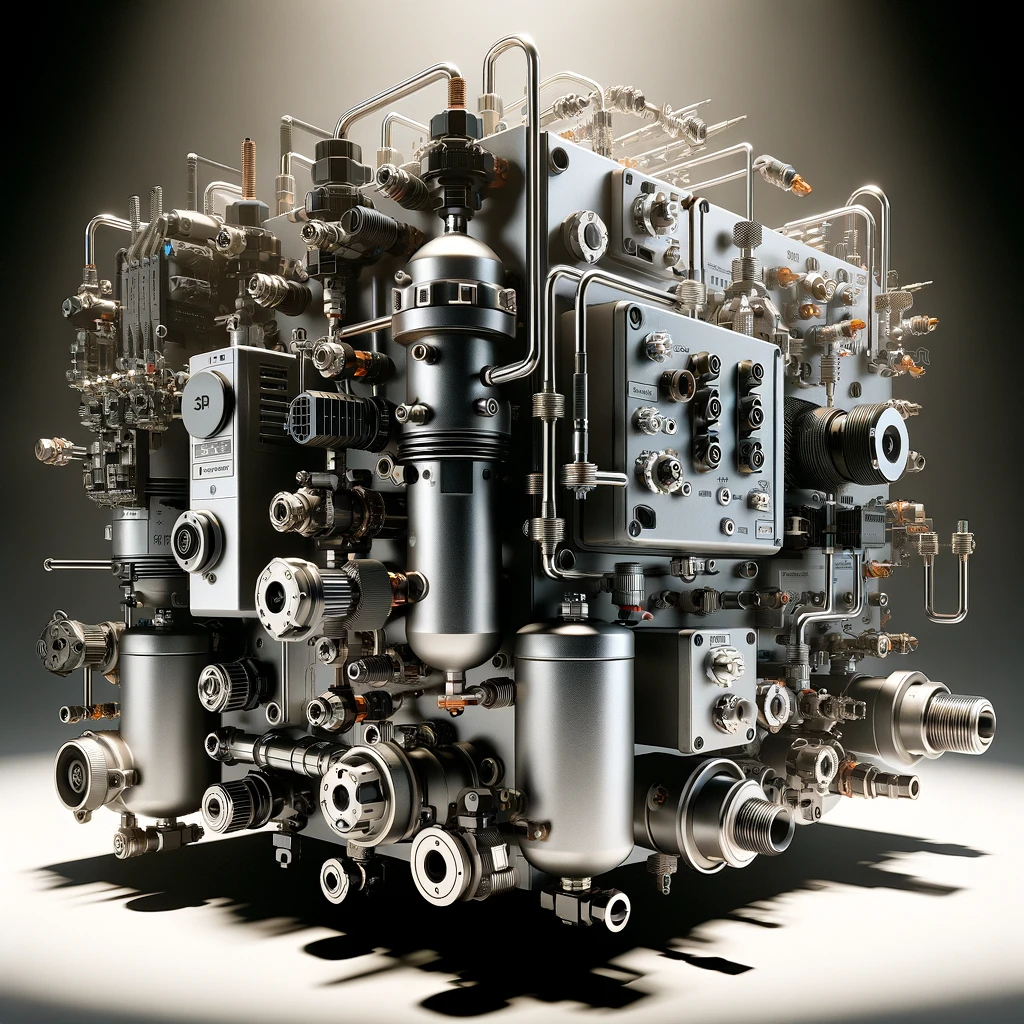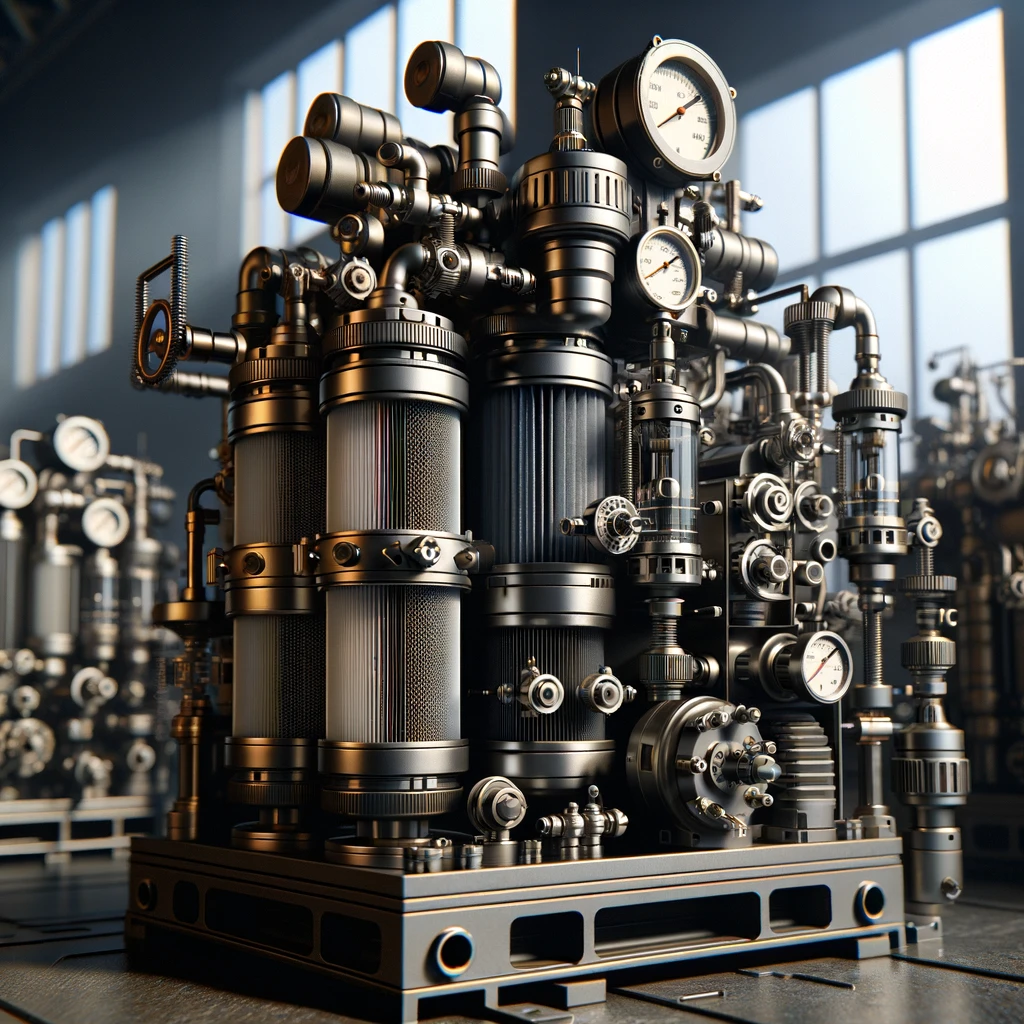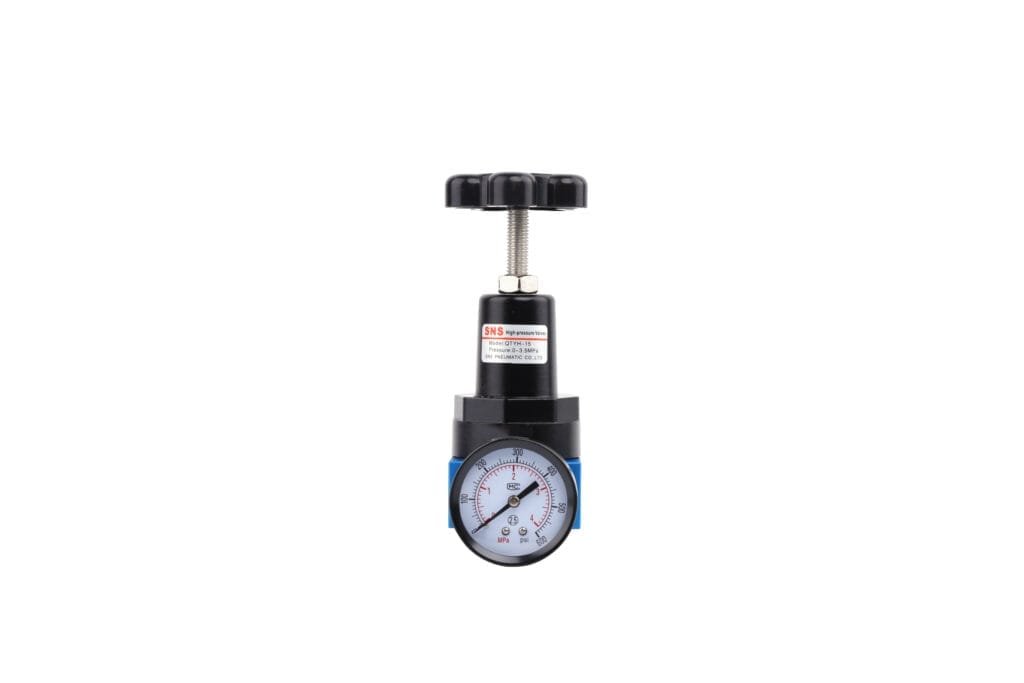What Is Frl System
An FRL system, standing for Filter, Regulator, and Lubricator, is essential for maintaining pneumatic tools’ efficiency and longevity. It filters contaminants, adjusts air pressure, and lubricates to optimize tool performance.
An FRL system is a crucial component for anyone using pneumatic tools, ensuring their smooth operation and extending their lifespan. This introduction will delve into how each part of the FRL system works together to protect and enhance your equipment.
Key Takeaways
- An FRL system consists of filters, regulators, and lubricators essential for pneumatic tool maintenance.
- It enhances tool longevity by cleaning air, controlling pressure, and lubricating parts.
- Filters remove contaminants, regulators adjust air pressure, and lubricators add oil to reduce friction.
What Is FRL System
An FRL system combines a filter, regulator, and lubricator to ensure pneumatic systems use air efficiently. This system is crucial for keeping these systems running smoothly. Let’s dive into each component.
First, the filter. It removes contaminants like dust, moisture, and oil from the air. Without this step, particles could harm pneumatic tools, leading to breakdowns and costly fixes.
Next is the regulator. It adjusts air pressure to a safe level for tools to use. Too much pressure can damage tools, so precise control helps prevent this and ensures tools work as they should.
Finally, the lubricator. It adds a mist of oil to the air, reducing friction in tool parts. This keeps tools running smoothly and extends their lifespan.
In short, the FRL system is a safeguard. It keeps the air clean, at the right pressure, and lubricated, protecting tools and ensuring they perform well.
What Are The 3 Components Of An FRL?
- Filters
- Regulators
- Lubricators
Filters
Filters catch dust, dirt, rust, water, and oil, preventing these from harming air-powered tools and machinery. Positioned before regulators, lubricators, valves, and air-powered devices, filters ensure clean air flows through, enhancing equipment longevity and system performance.
Firstly, filters tackle solid contaminants like dust and rust. These particles can wear out or clog air-powered equipment, leading to malfunctions or inefficiency. By removing these solids, filters protect the internal components of pneumatic devices, ensuring they operate smoothly.
Secondly, filters are vital for separating liquids from the air. Water and oil in compressed air can cause damage or corrosion to pneumatic tools and machinery. By eliminating these liquids, filters prevent potential damage, thereby saving on repair costs and extending equipment life.
Moreover, the placement of filters is strategic. Located upstream of other components in the compressed air line, they ensure that only clean, dry air reaches the sensitive parts of the system. This setup is crucial for maintaining the overall health and efficiency of the compressed air system.
Regulators
Air regulators adjust air pressure, keeping it at an ideal level to prevent tool damage and enhance performance. It’s important to have a filter before the regulator to remove any impurities from the air. This step protects the regulator and ensures clean air flows through, maintaining the system’s effectiveness.
In more detail, regulators serve a dual purpose. Firstly, they act as gatekeepers, moderating the air pressure from the compressor to a usable level for various tools. This controlled environment allows for precision in operations, where too much pressure could lead to equipment failure or safety hazards. Secondly, by maintaining a consistent output pressure, regulators contribute to the longevity and reliability of pneumatic devices. Over time, this consistency saves costs related to maintenance and replacements.
The placement of a filter before the regulator is a strategic move. It captures dust, debris, and moisture that could clog or corrode the regulator’s components. This not only extends the life of the regulator but also ensures that the air powering the tools is as clean as possible. Clean air means fewer operational hiccups, such as jams or malfunctions, especially in sensitive pneumatic equipment.
Lubricators
Lubricators add just the right amount of oil into the air system. This oil helps to reduce wear on parts that move. Since these tools, like air drills or pneumatic cylinders, rely on compressed air, they need this oil to work smoothly. Without it, they would quickly wear out or not work as they should.
The way lubricators work is by carefully measuring oil into the air that flows through the system. This ensures that every part of the tool that needs lubrication gets it. It’s a precise process that keeps everything running smoothly. Think of it as putting just the right amount of oil in your car engine; too little and things grind together, too much and it can cause other problems.
This oiling process helps to cut down on friction. Friction is what happens when parts move against each other. Over time, this can damage the tool. But with the right amount of lubrication, tools can work better and last longer. It’s a bit like using lotion on dry skin; it helps to prevent damage and keep things moving smoothly. By keeping up with this lubrication, you can greatly increase the life of your pneumatic equipment.

What Is The Purpose Of The FRL?
An FRL system is crucial for keeping pneumatic tools running efficiently and for a long time. It consists of filters, regulators, and lubricators. These components work together to clean the air, control its pressure, and keep the tools lubricated. This process ensures tools operate smoothly, reducing the chance of breakdowns.
Where Are FRL Units Used?
- Manufacturing and Automation: FRL units are essential, controlling air pressure, filtering dirt, and lubricating moving parts in pneumatic equipment to ensure precision and reliability.
- Automotive and Aerospace Industries: These sectors heavily depend on FRL units for protecting equipment, reducing maintenance costs, and ensuring the longevity of components with intricate pneumatic controls.
- Pneumatic System Protection: In environments susceptible to moisture and dust, FRL units are crucial for removing contaminants, preventing expensive downtime and repairs, and safeguarding pneumatic technology investments.
4 Factors To Consider To Select The Right FRL Unit
- Air Pressure: The minimum pressure necessary for tools to operate efficiently, crucial for ensuring they work well without any hiccups, akin to having enough water pressure for a satisfying shower.
- Flow Rate: How much air moves through the system, compared to the volume of water flowing through a hose, essential for keeping air pressure steady and ensuring tools do not falter mid-use.
- Air Quality: The cleanliness of air required to prevent damage and wear on tools, similar to using clean, filtered water to avoid buildup in appliances, vital for meeting certain cleanliness standards depending on the application.
- Pressure Drop Across the FRL Unit: The minimal pressure loss caused by FRL units, important to keep as low as possible to maintain enough pressure after the FRL so tools work as intended, like ensuring a water filter doesn’t overly reduce water pressure.
How To Choose Pneumatic Filter In FRL
- Particle Size: Determine the size of particles to filter out, measured in microns. A 40-micron filter is adequate for most uses, but more sensitive equipment may require finer filtration down to 5 microns or less.
- Compatibility with Moisture and Oil: Choose a filter material that can withstand the air’s moisture and oil content, extending service life and ensuring system reliability.
- Flow Rate: Ensure the filter can handle your system’s maximum flow rate without significant pressure drops, avoiding inefficiency and potential equipment damage.
- Maintenance and Replacement: Opt for a filter that is easy to maintain and for which replacement parts are readily available, to minimize downtime and keep operations smooth.
How To Choose Pneumatic Regulators In FRL
- Pressure Drop Tolerance: Understanding the allowable difference in pressure before and after the regulator, critical for optimal system performance.
- Pressure Adjustment Range: Essential for fine-tuning the system’s pressure to precise requirements, ensuring the regulator’s adjustment capabilities meet the system’s needs.
- Maximum Pressure Capacity: The regulator’s maximum pressure should exceed the system’s highest anticipated pressure to prevent damage.
- Downstream Pressure Stability: The ability of the regulator to maintain consistent pressure despite supply pressure fluctuations or changes in system demand, crucial for the efficient operation of pneumatic tools or machines.
How To Choose Pneumatic Lubricators In FRL
- Match Lubricant to Equipment Needs: Essential for ensuring your pneumatic tools operate efficiently and last longer. Choose a lubricator with a reservoir large enough for a continuous supply of oil, especially during high-use periods, to avoid tool damage.
- Amount of Lubricant: Critical for tool protection. Too little lubricant might not adequately protect your tools, while too much can lead to oil buildup and system malfunction. Use system’s flow rate and pressure to adjust the lubricator and regulator correctly.
- Type of Filters: Affects lubricator performance. Ensure the lubricator is compatible with your filters to prevent oil droplet removal that your tools need, avoiding constant adjustments to oil output.
- Regulator Setting: Crucial to match system pressure. Ensures the lubricator feeds the right amount of oil to your tools, avoiding tool damage from too little oil or resource waste and increased maintenance from too much oil.

How To Install FRL
- Clean the FRL: Thoroughly clean the unit to eliminate any dust.
- Remove Plastic Inserts: Take out the plastic inserts from the FRL and dispose of them properly.
- Prepare the Dial: Wrap the threads of the dial with two layers of thread seal tape to prevent air leaks and ensure accurate air flow regulation. Then, attach the dial to the front of the FRL unit.
- Assemble Quick-Connect Bushings and NPT Reducers: Connect the bushings to the NPT reducers, applying two layers of thread seal tape on the threads to ensure airtight connections. Attach these components to the valve housings on either side of the FRL.
- Select Installation Location: Choose an effective location for the FRL, ideally on the back of the machine’s chip pans.
- Mount the FRL: Use the provided bracket as a template to mark and drill holes. Secure the bracket with the appropriate hardware.
- Connect Air Lines: Attach the air lines to the quick-connect bushings to complete the installation, enhancing performance and extending the longevity of your pneumatic tools.
Do I Need Anything Else To Make A Filter Regulator Lubricator (FRL) Work?
To set up a Filter Regulator Lubricator (FRL) system, you’ll need more than just the FRL unit itself. Essential parts include the correct fittings and tubing, which must be compatible with your FRL and the entire pneumatic system. Pay attention to the sizes of the connections on your air filter, regulator, and lubricator. They must match the fittings to avoid leaks and ensure efficiency.
Different applications might require specific types of fittings. For instance, extreme temperatures or corrosive materials may need fittings designed to withstand these conditions. It’s crucial to consider what your system will face and choose components accordingly.
Beyond the initial setup, maintaining your FRL system is vital. This involves checking and cleaning the air filter regularly, ensuring the regulator is properly calibrated, and keeping the lubricator filled and functional. Neglecting these steps can lead to inefficiencies and system failures. In short, both choosing the right components and keeping up with maintenance are key to a successful FRL system.
Frequently Asked Questions
Can I DIY Repair a Damaged FRL Component?
You can attempt to DIY repair a damaged FRL component if you have the necessary technical skills and tools. However, fixing it properly demands careful analysis and attention to detail to ensure the system works correctly after the repair.
How Often Should FRL Components Be Replaced?
The frequency of replacing FRL (Filter, Regulator, Lubricator) components ranges from 2 to 5 years, which varies based on how much they’re used and their exposure to different environments. Conducting regular checks on these parts is crucial to spot any deterioration early on, helping to keep the system running smoothly and avoiding unexpected breakdowns.
Are FRL Systems Compatible With All Pneumatic Tools?
Mostly, they can, but you should compare the tool’s needs with the FRL’s specs to make sure they work well together. This helps prevent problems.
Can FRL Systems Reduce Energy Consumption?
FRL systems can help cut down on energy use by managing air pressure, cleaning out dirt, and making parts run smoother. This means tools and machines work better and use less power, saving energy and money.
What Safety Precautions Are Necessary When Using Frls?
For safety with FRLs (Filter, Regulator, Lubricator systems), it’s crucial to regularly check and maintain them. Make sure they’re properly installed, use clean air, and always follow the guidelines from the manufacturer to avoid accidents and keep the system working well.
Conclusion
In conclusion, choosing the right FRL components is crucial for the optimal performance of your pneumatic system.
Discover the perfect FRL solutions for your needs by exploring our comprehensive range. Ensure your system’s efficiency and longevity by consulting with our experts today.





